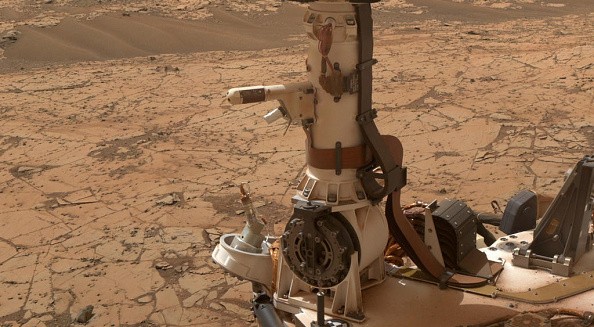NASA's Mars Curiosity Rover discovered that some of the Red Planet's rock records are missing. The international space agency claimed that this happened because of the space body's super-salty water called brine.

"We've learned something very important: There are some parts of the Martian rock record that aren't so good at preserving evidence of the planet's past and possible life," Ashwin Vasavada, the National Aeronautics and Space Administration's Project Scientist of Curiosity Rover.
For the past few years, space experts believed that the Red Planet was full of lakes billions of years ago. They added that these bodies of water served as one of the main habitats of various microbial organisms.
However, NASA's researchers and other scientists from different space agencies explained that these lakes are no longer existing because of Mars' extreme climate, which changed and dried out the bodies of water.
NASA Mars Curiosity Rover's Rock Samples
According to The Sun's latest report, the missing rock samples of NASA's Curiosity Rover reveals that they were broken down by the so-called brines. Experts involved in the current space activity also explained that the clay minerals were dispersed in different areas of the Red Planet.

Also Read : NASA Astronaut Shows 'Terminator Line' Through Endeavour's Window | Here's How it Looks Like
"We used to think that once these layers of clay minerals formed at the bottom of the lake in Gale Crater, they stayed that way, preserving the moment in time they formed for billions of years," added CheMin Principal Investigator Tom Bristow.
He added that brines were the reason why Mars experienced rock resetting. Specifically, NASA's scientists targeted the Gale Crater. They believed that this crater has some undisturbed layers of ancient rocks, teaching them more about the Red Planet's history.
NASA's Perseverance Rover Wants To Find Mars' Intelligent Life
Space.Com reported that NASA is also planning to use its Perseverance Rover to look for intelligent life forms on the Red Planet. On the other hand, the international space agency also plans to release its first update about Perseverance's work.
NASA is planning to do this during a news conference. It will be aired on NASA TV and other popular websites and social media platforms.
For more news updates about NASA and its upcoming space discoveries, always keep your tabs open here at TechTimes.
Related Article : How to Watch the Relocation of SpaceX's Crew Dragon Giving Space for the Boeing's Key Starliner Test
This article is owned by TechTimes
Written by: Griffin Davis
ⓒ 2025 TECHTIMES.com All rights reserved. Do not reproduce without permission.




